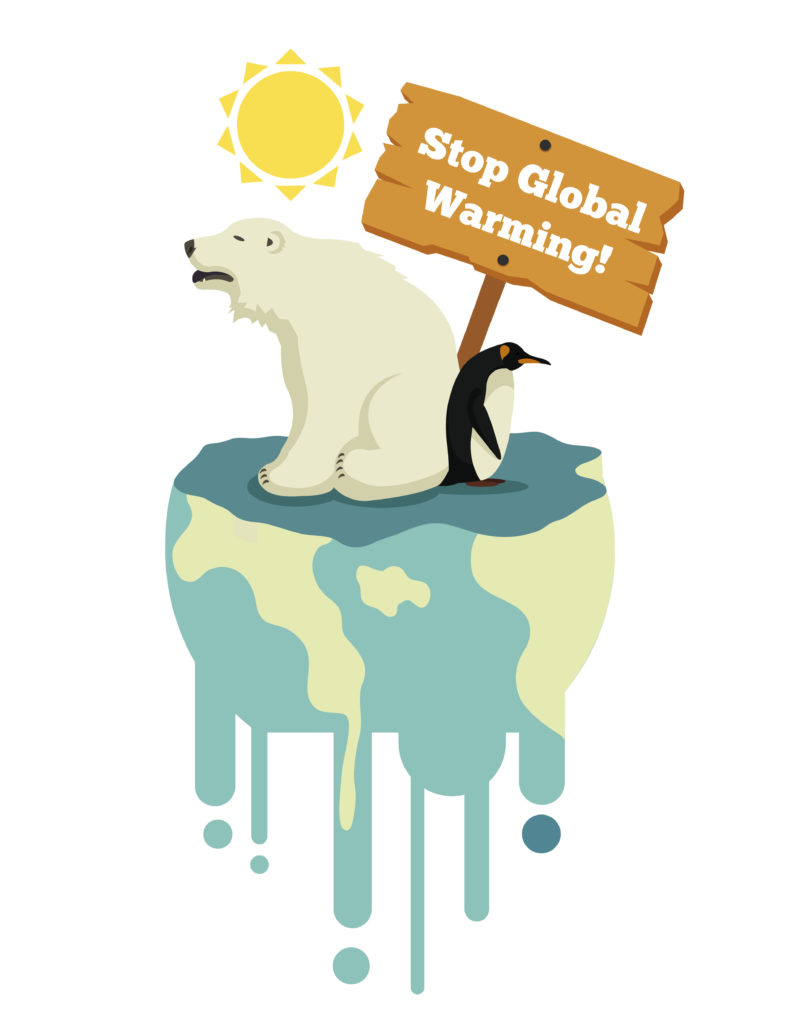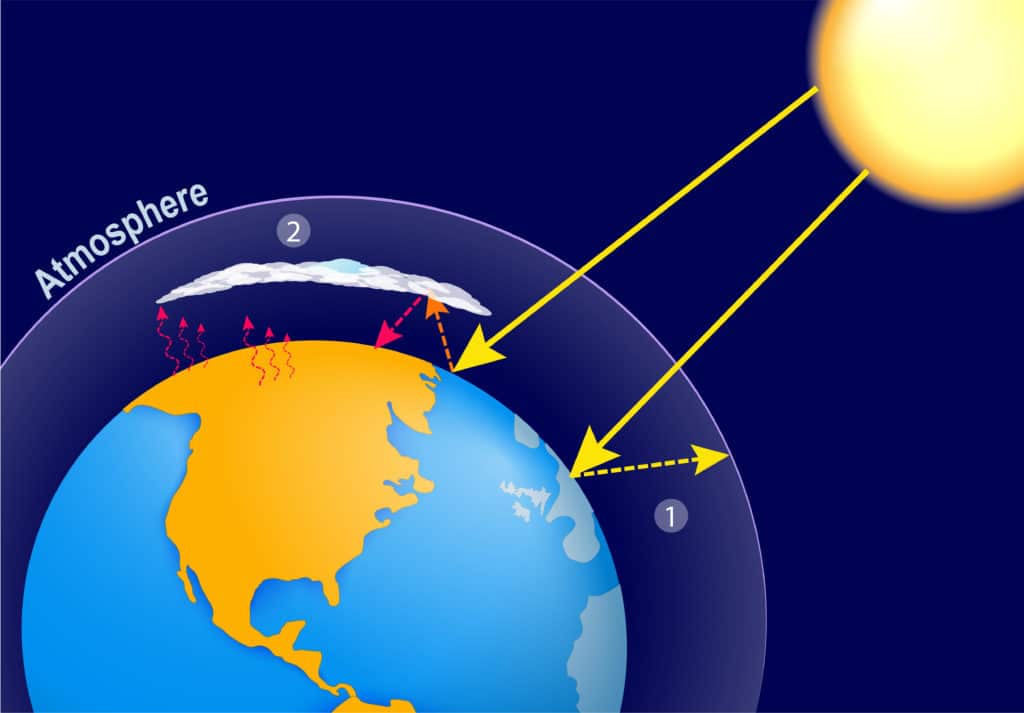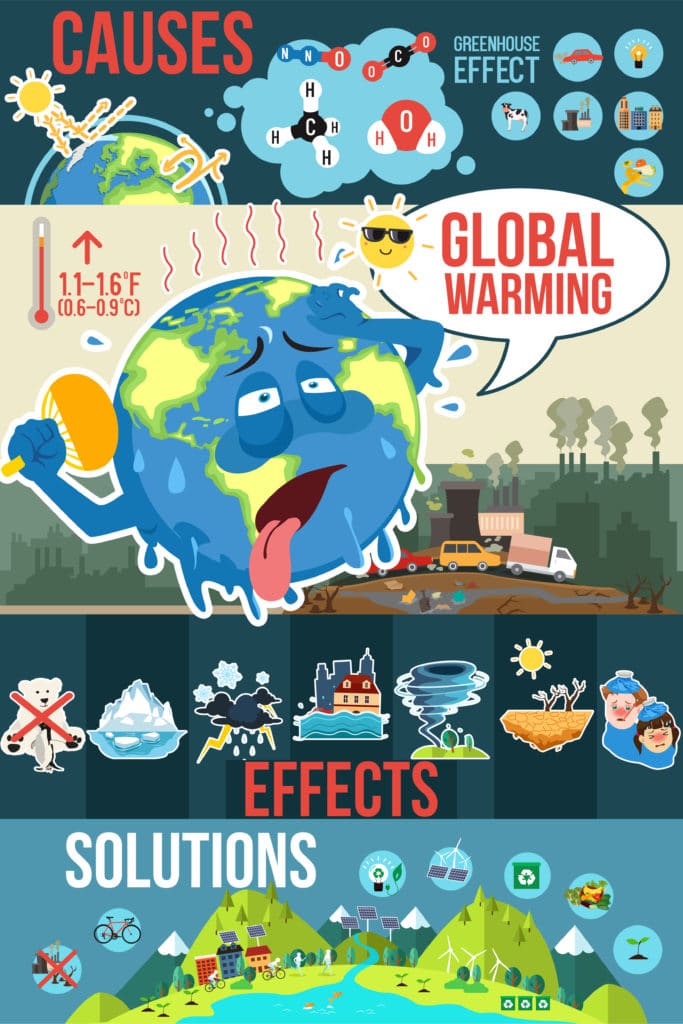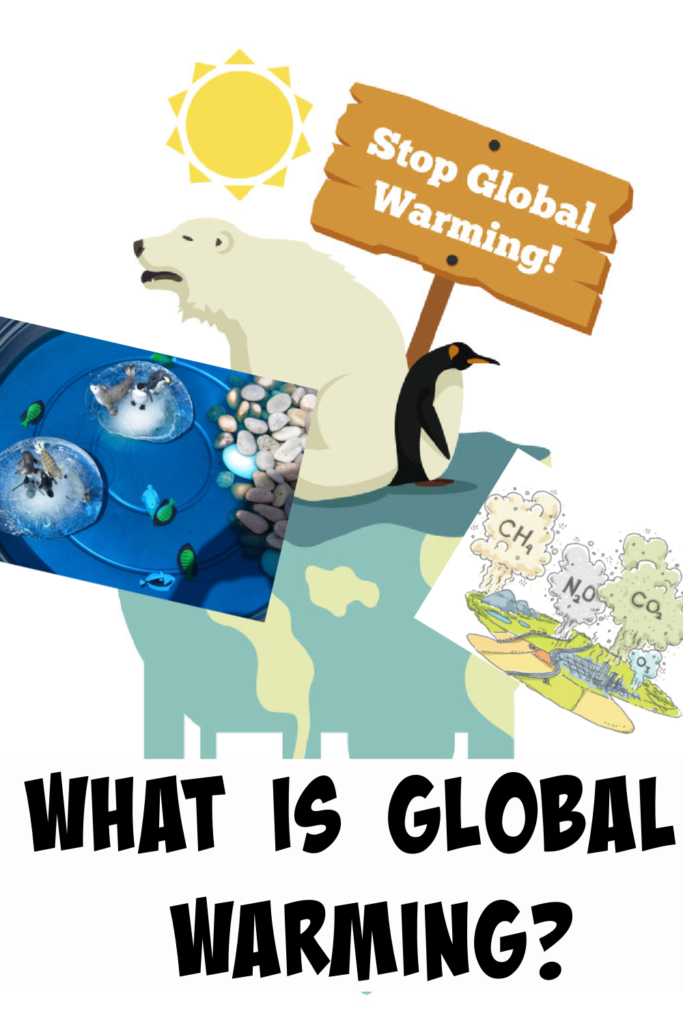We’ve all heard about climate change, but what is it and how can we teach our children about it? First children need to be informed and secondly they need to feel empowered, to feel like they can make a difference. Remember lots of small actions add up to a big result.
What is Climate?
Climate refers to weather conditions ( rainfall, wind, temperature ) over a large region and over time. When we talk about the weather, we usually mean what the weather is like that day or week. For example, the overall climate in Britain is temperate with cool winters and warm summers, but the weather can be cold in summer for a short period of time. Weather is generally local and temporary.
What is Climate Change?
Climate Change ( sometimes referred to as global warming ) is the process of our planet heating up. This is largely caused by deforestation, burning fossil fuels and farming. The Earth is warming up faster now than in any other time period we know about.

How much has the Earth’s temperature increased?
Did you know the average temperature on Earth has increased by 1°C in the last century. That might not seem like much, but oceans cover 70% of our planet, and it takes a lot of energy to heat up all that water, as well as air and land. So a 1 degree increase in the average global temperature is a big thing!
Rising temperatures don’t just mean that we’ll get warmer weather, the increasing temperatures will make worldwide weather more extreme. Some areas will get wetter and some drier. Animals and humans could start to find it difficult to adapt to their changing climate. Low lying coastal regions could flood or disappear as sea levels rise as the ice caps melt.
How do we know the climate is changing?
Scientists know that the Earth’s climate has warmed up and cooled down several times over millions of years, but the current temperature increase is happening much faster than has been known before.
The main reason Earth is getting warmer is because of an increase in greenhouse gases in the atmosphere. Greenhouse gases ( for example Carbon Dioxide and Methane ) trap heat from the sun in the Earth’s atmosphere. The trapped heat is contributing to the warming of our planet.

Why are greenhouse gases increasing?
Humans burning fossil fuels is a big contributer to the increase in carbon dioxide in our atmosphere.

How do scientists know what the Earth’s climate was years ago?
One way scientists can tell what the Earth’s climate was like in the past is to study ice cores.
Ice cores are tubes of ice taken from deep below the surface of the ice today. Scientists can analyse the bubbles in each layer to calculate how much carbon dioxide they contain.
Rising sea levels also tell us that the climate is warming up and this isn’t just due to melting ice caps. As ocean warm up, water expands too!
Why does it matter that Earth’s climate is changing?
Over millions of years, Earth’s climate has warmed up and cooled down many times. However, today the planet is warming much faster than it has in any other time period we know about.
Even a small increase in global temperatures can have a huge impacts on the health of the plants and animals on our planet.
What can we do to halt climate change?
There are lots of small actions individuals can take to help.
Change the way you travel
Reducing how much you use a car is one of the most effective measures a single person can take. Using public transport more or switching to an electric vehicle is a great start.
Aeroplanes also contribute massively to increasing carbon dioxide levels, so holidaying locally, and generally travelling less is another good way to reduce carbon emissions.
Eat Less Meat
A person who reduces thier animal protein consumption by half also reduces thier carbon footprint by 40%! Isn’t that incredible?
Avoid Fast Fashion
Chose good quality clothes that will last a long time rather than fast fashion that’s not worn for long.
Shop locally
By shopping locally you can reduce the number of miles your food travels and therefore your carbon footprint.
Reduce plastic usage
Shop thoughtfully. Don’t buy heavily packaged products. Yes, they will still be on the shelves for now, but if everyone stops buying them perhaps the manufacturers will change their processes.
Take a stand and refuse to buy plastic toys that won’t get used.
Take your own reusable containers to supermarkets and if you buy a lot of hot drinks a reusable cup is a great investment.
You could argue that one person eating less meat, buying less plastic and not going on holiday abroad isn’t going to make any difference to climate change, but people follow the example of others, so by setting a good example to family and friends and speaking out about your actions YOU can actually end up making a huge difference around the world.
Learn about Climate Change – Hands on Science
Demonstrate melting polar ice caps with this melting ice activity.
Learn about greenhouse gases and make edible models.
Take a look at my collection of FREE climate change resources.
This Earth toast is a great visual activity from Left Brain, Craft Brain.
Find out how cows contribute to global warming.

Last Updated on May 5, 2022 by Emma Vanstone

I work for Kirklees Museums. As part of our pledge to Culture Declares Climate Emergency I am getting together a museum in a box that will help young and old to understand climate change. I have looked at lots of information, on many different sites, but yours seems the clearest, easy to understand and beautifully illustrated. I wondered if it would be possible to have a printable version of your climate change materials to add to the box. This will be used in our Culture Declares Climate Emergency pop up shop in Huddersfield and will be available for free loan to schools and other community groups.
Thank you